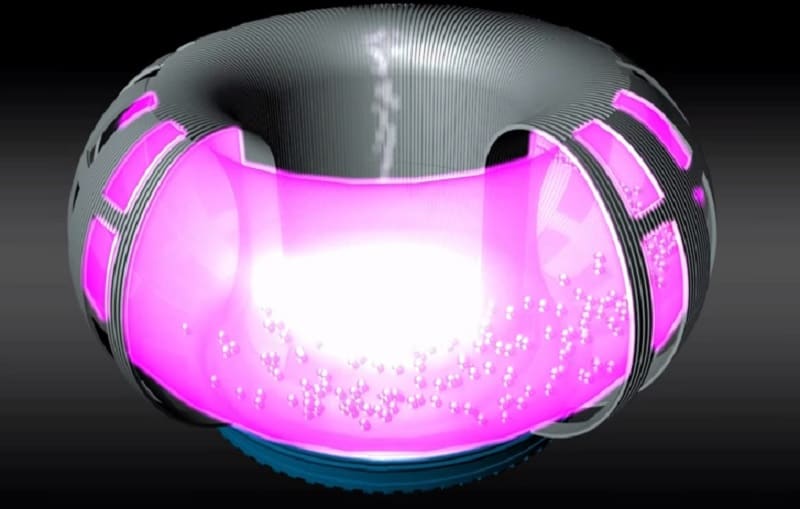
One of the main challenges for the construction of DEMO, the first demonstration fusion reactor, is the solution to the problem of thermal loads that the excess energy discharge system, the divertor, will have to bear
The DTT (Divertor Tokamak Test) facility is part of the Eurofusion program to study alternative solutions to the DEMO thermal load problem.
The physical and technological aspects of this important component of the fusion reactor will be investigated by exploring advanced magnetic configurations and divertors based on liquid metals in the DTT machine. The facility is under construction in Frascati under the aegis of ENEA and with the collaboration of ENI, Consorzio RFX, CRATE Consortium, the Universities of Rome Tor Vergata, Tuscia, Milano Bicocca and Politecnico di Torino united in the DTT Consortium.
DTT will carry out scaled experiments to find alternatives for the divertor able to integrate with the specific physical conditions and technological solutions envisaged in DEMO. DTT will experiment with different magnetic configurations, with components based on the use of liquid metals and other suitable solutions for the problem of thermal loads on the divertor.
The realization of this project will lead to the recruitment of 150 people including researchers, technicians and administrators as well as all the people employed in the companies that will be contracted in the construction of the machine.
In addition to the research results, this project is expected to have a positive impact on the development of new innovative technologies and on the development of R&D of European industries.
In the project proposal, the parameters were chosen so as to reproduce the conditions on the plasma frontier similar to those of DEMO in terms of dimensionless quantities characterizing the physics, both of the peripheral region of the plasma, the coldest region that interacts with the wall known as the Scrape-Off Layer (SOL), and of the divertor. Particular attention was paid to maintaining the full compatibility of the plasma characteristics with those of DEMO, always in terms of dimensionless quantities.
The main parameters of the machine were chosen in such a way as to guarantee maximum flexibility, even within the limits of a budget and a time program consistent with the European Road Map. To this end, DTT will have to go into operation by 2026.
Consorzio RFX will make a significant contribution to the construction of the Tokamak DTT by designing and supplying the 10 MW, 500 keV neutral injector and some diagnostic systems. Physics studies of various aspects of the Tokamak operation will be carried out, such as those inherent to the magnetohydrodynamic instabilities, the phenomena that determine the mode of dissipation of energy to the divertor and the complex behavior of highly energetic particles in the plasma. These studies will help determine the specifications of different internal components of the torus and aid in the drafting of the experimental plan that the machine will follow once built.